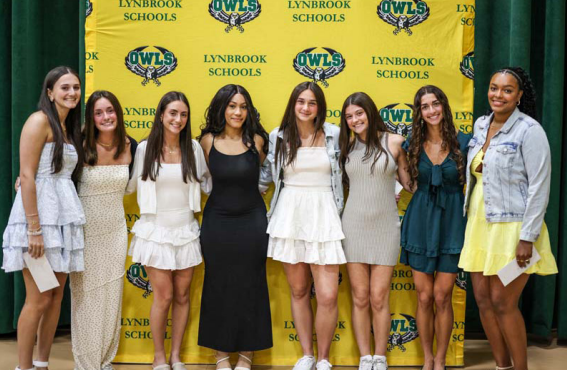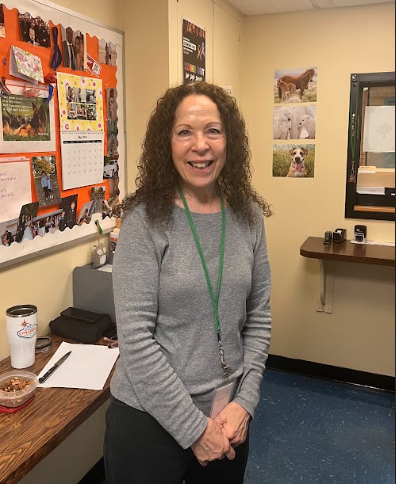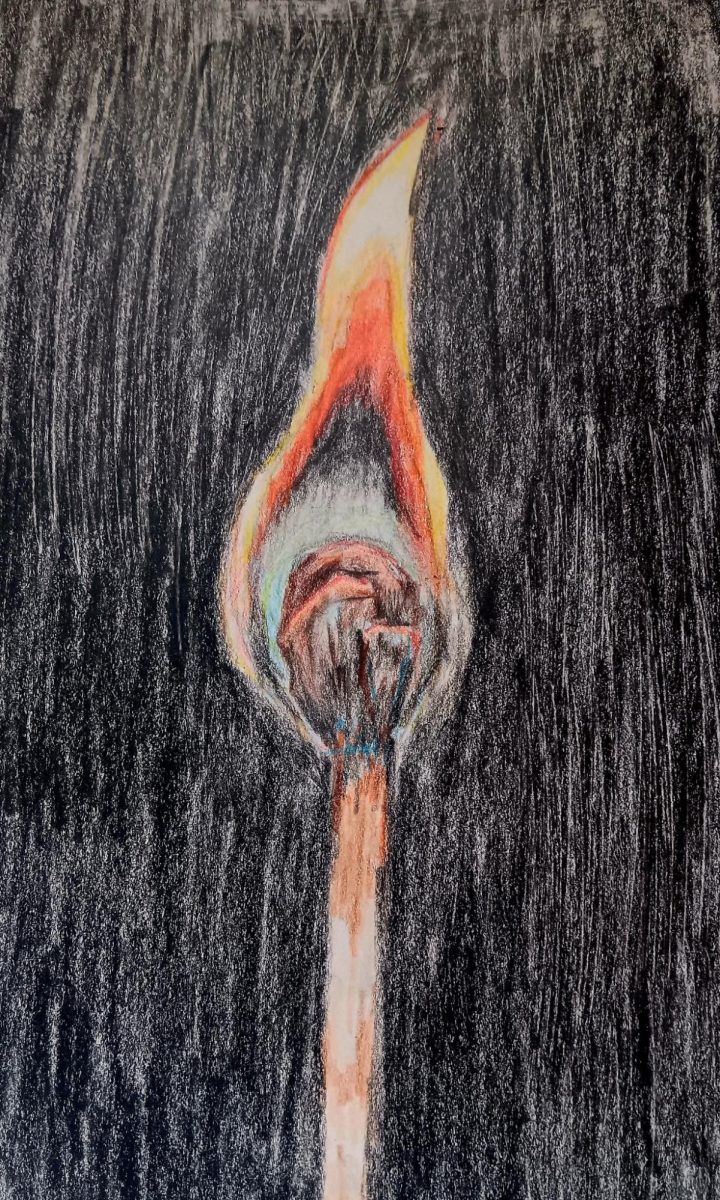Spanish teacher William Luzzi’s junior and senior students spent the end of October assembling a Day-of-the-Dead-inspired altar honoring former Lynbrook Superintendent Dr. Santo Barbarino, who passed away in 2012.
Luzzi explained that the Day of the Dead, Dia de los Muertos, is mainly celebrated in Mexico but is “also popular in a lot of other Latin American countries.” He added that it includes both “elements from Catholicism and elements from the Aztec religion.” He exlained, “[To celebrate,] people will go to cemeteries and decorate the graves of loved ones with flowers and all types of other things, and, also, they’ll make altares, which are altars in their homes, that represent their loved ones.”
The belief behind the holiday is that the spirits of the dead visit the land of the living. “It’s like a reunion of people,” said Luzzi, “and it’s meant to be a happy holiday to celebrate their lives; it’s not a holiday to mourn at all.” Luzzi also detailed the items that are included on a typical altar: there is often a main picture of the deceased along with other smaller pictures, water to hydrate the spirits after their journey, salt for purification, a type of bread called pan dulce for them to eat, incense to drive away evil spirits, and vivid flowers that invite joy and beauty. Papeles picados, banners of colorful papers with cutouts of cheerful pictures are a common decoration for the Day of the Dead. Additionally, the skulls and skeletons associated with the holiday are “usually happy,” Luzzi added; “they’re not meant to be scary.”
Last year, to familiarize and immerse the students in the culture of Dia de los Muertos, Luzzi’s classes created an altar in their classroom for Queen Elizabeth, who had passed away earlier that school year. This year, Luzzi wanted to honor someone more relevant to the Lynbrook community, and Barbarino came to mind. Because the students had not known the former superintendent, Luzzi sent them around the building to ask teachers what they remembered about him. As they shared their findings, Luzzi recalled, “Every single class was like, ‘Wow, this guy was amazing. This guy was the best guy ever,’ and that’s really how people felt about him.” Students then garnered items that represented what Barbarino had loved during his life “so that when he comes back to visit, in theory and in spirit, that we’ll have some of those ofrendas for him,” explained Luzzi.
The students contributed numerous items to the altar, which was set up in the Alicemarie Bresnihan wing on the first of November. Some students baked pan dolce for the altar; others brought in food Barbarino had loved: pasta, chocolate bars, and pistachios. Sports items such as a baseball, soccer ball, two basketballs, and a Lynbrook lacrosse jacket were on it as well; many of the students had discovered how involved Barbarino had been in Lynbrook sports and his remarkable attendance at the sporting events. Other items included a guitar and instrument mouthpiece to symbolize his love for music; a copy of Horizon; a large stuffed Lynbrook owl; a mini creche to represent his devoutness to Catholicism; and various photographs of him with staff members. Also present were the traditional items of an altar: water, salt, candles, colorful skulls and skeleton decorations, and papeles picados hanging above it. The students’ notes of what they had learned from various faculty members were taped on the wall next to the altar. Teachers had testified to how sweet and caring he was and described him as “Mr. Lynbrook”, or “everyone’s favorite grandfather,” and said that he believed that “next to the clergy, teaching is the purest profession.”

Principal Matthew Sarosy thanked Luzzi and his classes through a post on Sarosy’s LHS Instagram account and in the weekly update from Nonv. 3. Sarosy’s post added that “Dr. Barbarino’s brother, Al, and sister-in-law, MaryAnne, were able to pay a special visit as well.”
Senior and AP Spanish student Gianna Taverna discovered a lot about Barbarino through the project. She commented, “Personally, I didn’t know him, and a lot of our fellow classmates didn’t know him, so it brought the community together.” One of Taverna’s favorite aspects of the project was setting it up. “We really thought about how to place each item around the altar, especially Señor Luzzi,” she said. “He did an amazing job coming up with this whole thing; he got everyone involved.” Katie Sharkey, also a senior, remarked, “It was like a blast from the past learning a lot about someone who meant so much to the town.” Sharkey’s favorite part was visiting various teachers and learning about Barbarino from them.
The project served dual purposes for the students. Luzzi’s original hope was that the students understand the Day of the Dead and its traditions, but he noticed another lesson, not only for his students, but for all who visited the altar: “[Even] bigger than that is that they learn who Dr. B is in person and in spirit.” Sharkey noted this double lesson, adding, “It was nice to learn about the Spanish holiday while learning about Dr. Barbarino, too.”
Luzzi and his students took down the altar at the end of the school day on Friday, November 3, but it may not be the last time that such a project was seen. “I don’t think I can ever top it,” Luzzi commemorated, “so maybe, it becomes a yearly ritual, a yearly tradition that we honor Dr. B every year. That will certainly keep his memory alive in the halls.”






































